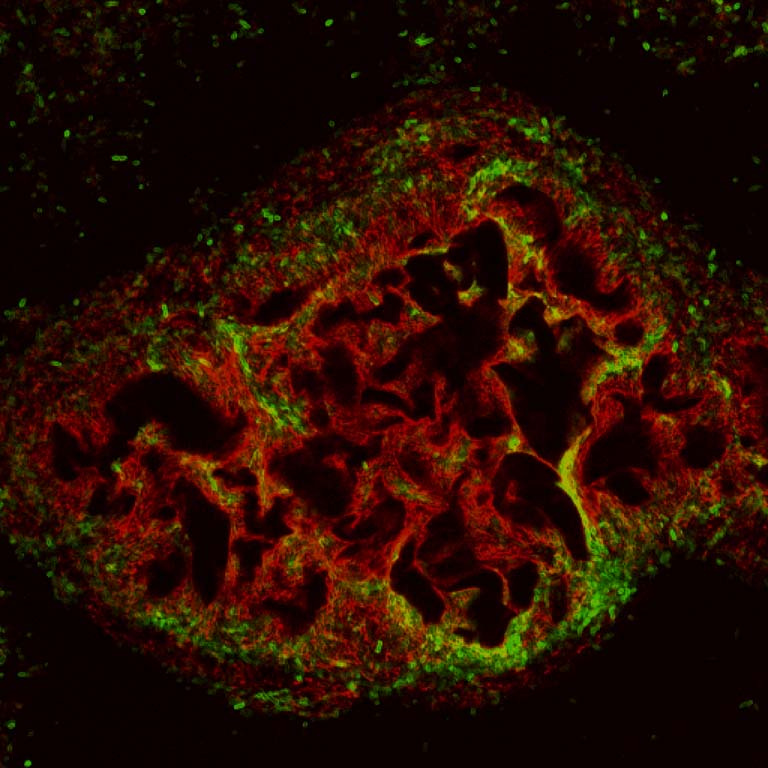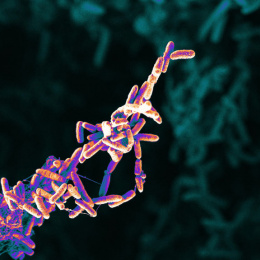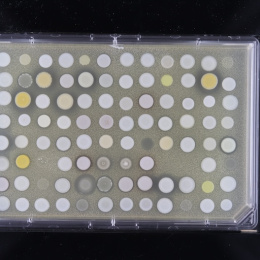The Role of Extracellular Polysaccharides in Biofilm Development
The Role of Extracellular Polysaccharides in Biofilm Development
Submitted by Nicole Billings of the Ribbeck Lab in the Department of Biological Engineering and Center for Environmental Health Sciences
MIT Department of Biological Engineering, MIT Center for Environmental Health Sciences
Pseudomonas aeruginosa is an opportunistic pathogen that causes devastating infections in immuno-compromised individuals. Similar to many microbial species, P. aeruginosa can form multicellular communities, termed biofilms. One hallmark of P. aeruginosa biofilm development is the formation of microcolonies. Biofilm development studies have shown that the extracellular polysaccharide Psl (labeled here in red) is an important component in the biofilm matrix that helps facilitate microcolony formation. This image illustrates a ruptured P. aeruginosa strain PAO1 microcolony and was part of a study on P. aeruginosa extracellular polysaccharides and their role in protecting biofilms from antibiotic assault during early biofilm formation.






